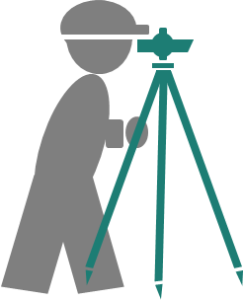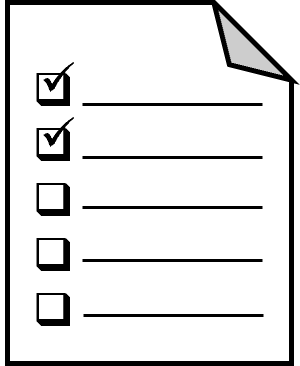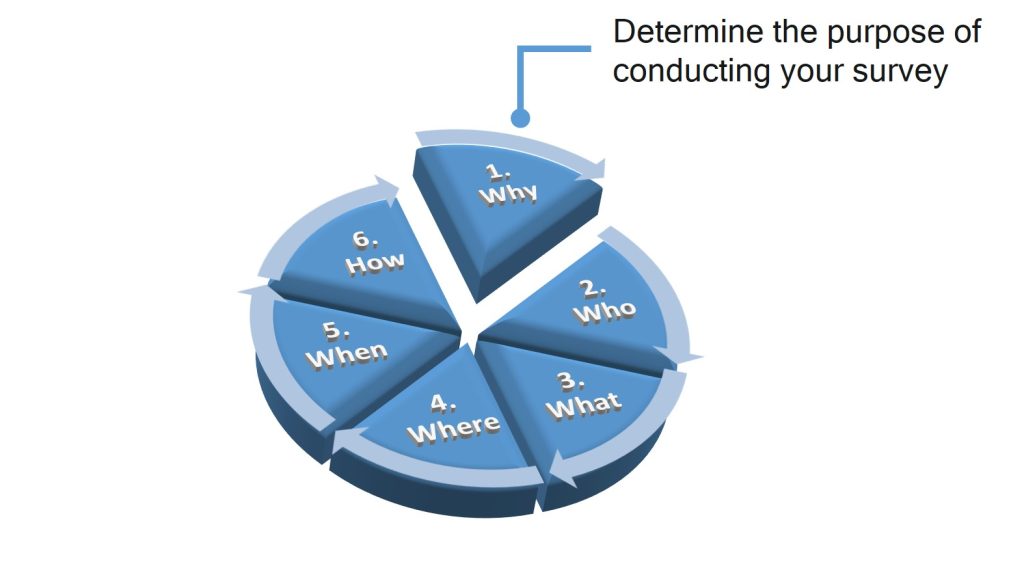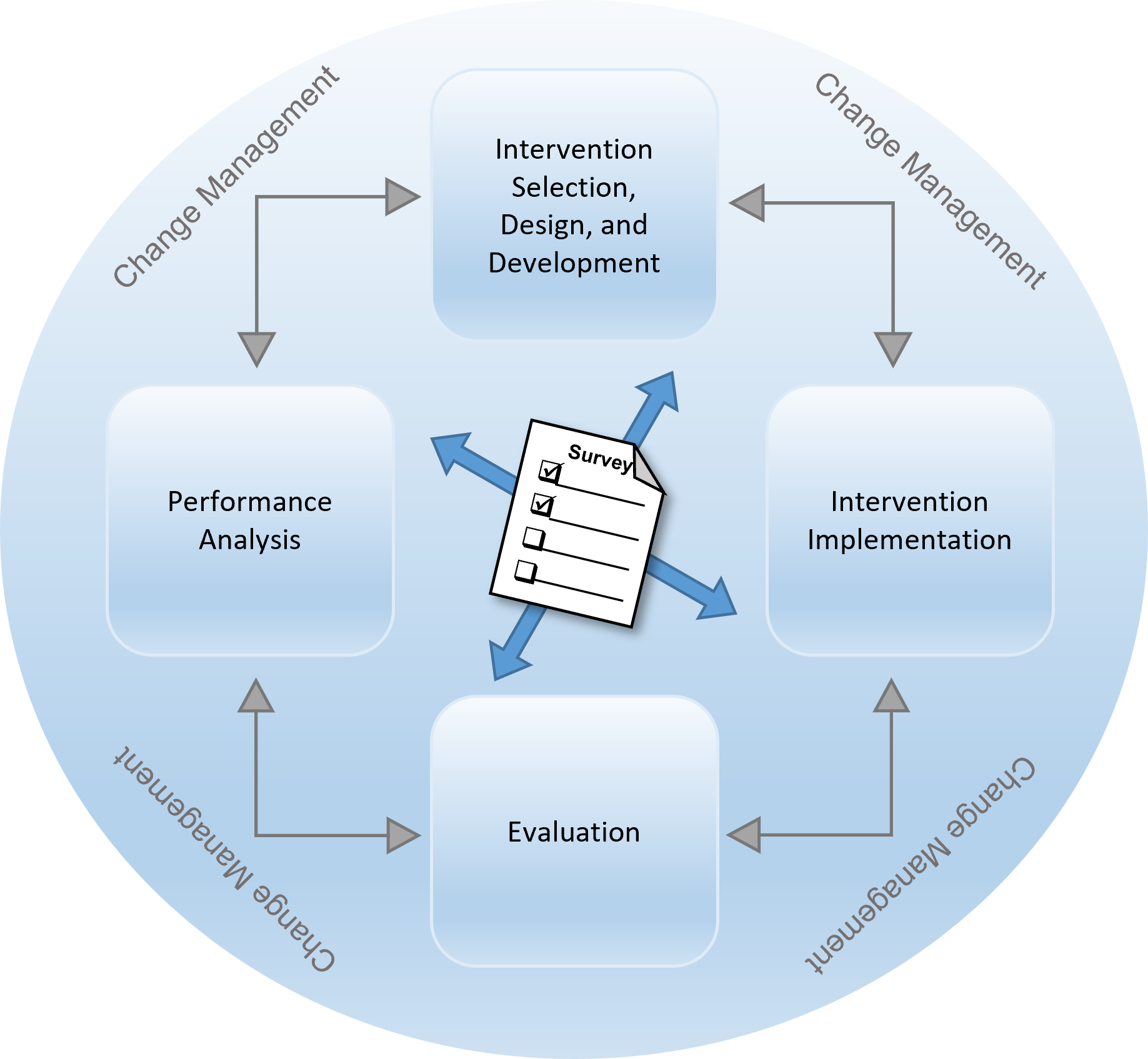1. Plan to Conduct Self-Administered Surveys
1.2 Purposes of conducting surveys in organizations

To survey in the physical world means to examine and record the condition or characteristics of something. For example, land surveyors use specialized tools to accurately measure and document the location of property lines.
 In contrast, to survey in the social science fields involve collecting information about people’s experiences, opinions, attitudes, or motivation behind their behaviors, most of which are not directly observable. For instance, to understand people’s satisfaction with a product or their level of support for a political party, you would develop a survey questionnaire and ask individuals to respond to a series of survey items. Just as land surveyors’ physical tools must be precise and reliable, survey questionnaires used in the social sciences must be carefully designed to accurately measure and record human thoughts and behaviors.
In contrast, to survey in the social science fields involve collecting information about people’s experiences, opinions, attitudes, or motivation behind their behaviors, most of which are not directly observable. For instance, to understand people’s satisfaction with a product or their level of support for a political party, you would develop a survey questionnaire and ask individuals to respond to a series of survey items. Just as land surveyors’ physical tools must be precise and reliable, survey questionnaires used in the social sciences must be carefully designed to accurately measure and record human thoughts and behaviors.
Before you begin designing your own survey questionnaire, it is important to understand the overall process of survey design and data analysis. This process can be effectively organized using the 5W1H method—a framework familiar to journalists[1]), but equally useful in research. For survey design and data analysis, we will follow the 5W1H steps in the following sequence (also see Figure 1):
- Why: Determine the purpose of conducting your survey
- Who: Determine your survey participants
- What: Determine the design of the survey questionnaire including the type of information you want to collect and the type of response scales you want to use
- Where: Determine whether to conduct your survey on paper or online
- When: Determine the timeframe in which you administer the survey and complete data collection
- How: Determine how you will analyze the data
The first step in the survey design and data analysis process is to address the Why (see Figure 1)—Why are you conducting this survey? What is the specific purpose or goal behind your data collection effort?
Figure 1 The Why Step in the Survey Design and Data Collection Process

Organizations often conduct surveys as part of social science research to gather valuable insights from employees. As a professional in Learning & Development (L&D), Human Resource Development (HRD), Organizational Development (OD), or Performance Improvement (PI), you may use surveys to better understand key employee characteristics and perspectives. These can include:
- Engagement levels
- Opinions on leadership styles
- Job satisfaction and overall morale
- Perceptions of organizational culture
- Satisfaction with completed training programs
In many cases, your survey may involve not only internal stakeholders but also external audiences, such as clients, customers, or community members, depending on the scope of your project.
From a performance improvement perspective, you will find the need to conduct surveys across all five phases of your performance improvement process[2], as illustrated in Figure 2. Specifically, surveys can play a critical role in identifying information during your:
- Evaluation projects,
- Performance analysis (needs assessment) projects,
- Instructional design projects, and/or
- Change management projects.
Figure 2 Surveys Conducted during All Phases of Performance Improvement Process

During evaluation projects, you need to gather input from various stakeholders to assess the quality of the evaluated programs or products, or to identify areas for improvement. You may collect such data through surveys as well as interviews, focus groups, observations, tests, and reviews of extant data reviews.
Surveys during evaluation projects may address questions such as:
- How user-friendly is the learning management system and how well has it been supporting the development of employee competency?
- Has safety awareness improved among employees since they completed the safety awareness training program?
- Did the onboarding process help new employees get up to speed with their job within the expected timeframe?
- How frequently do supervisors provide coaching to their employees?
During performance analysis projects, you need to collect information to identify performance gaps and analyze environmental or personal factors contributing to those gaps. You may discover such information from performers and other stakeholders via surveys, as well as observations, interviews, focus groups, tests, and/or existing data.
Surveys in performance analysis projects may explore:
- To what extent are employees aware of the organizational goals and performance expectations?
- How valued do employees feel and how does their perception impact their performance?
- What are the key facilitators and barriers to successful performance?
- Are the gaps primarily due to environmental or personal factors, and why?
During instructional design projects, it is essential to understand learner characteristics, supervisor expectations, and subject matter experts’ input to inform the instructional design process and desirable learning outcomes. Such information can be gathered through surveys, interviews, focus groups, and tests with those stakeholders as well as observations and extant data reviews.
Surveys during instructional design projects may investigate:
- What job tasks do subject matter experts or exemplary performers identify as essential for employees?
- How confident and motivated are employees in learning and improving their job performance?
- What tasks do employees find most difficult to understand and perform?
Surveys can also support the implementation and maintenance of interventions and the change management process. In these phases, the goal is to assess how well solutions are being applied and sustained. Survey questions during intervention and change management phases may include:
The purpose of conducting surveys during these phases is often to find out information about:
- How feasible is the recommended solution?
- How effectively is the intervention being implemented?
- What barriers, if any, have employees encountered during implementation?
- Singer, J. B. (2008). Five Ws and an H: Digital challenges in newspaper newsrooms and boardrooms. The International Journal of Media Management, 10(3), 122-129. https://doi.org/10.1080/14241270802262468 ↵
- Dessinger, J. C., Moseley, J. L., & Van Tiem, D. M. (2012). Performance improvement/HPT model: Guiding the process. Performance Improvement, 51(3), 10-17. https://doi.org/10.1002/pfi.20251 ↵

